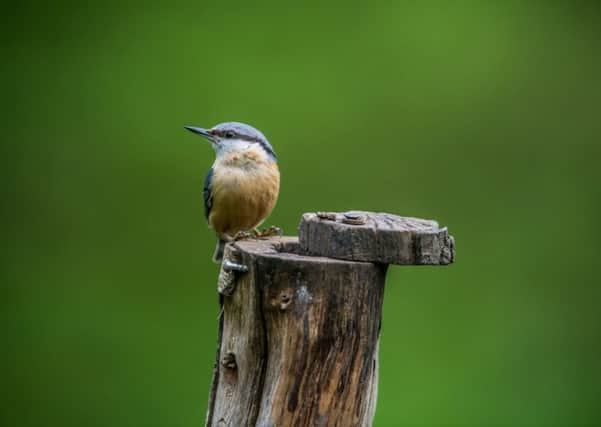Nuthatch makes '˜feelgood' return to garden feeders - Roger Ratcliffe


These lovely birds with blue-grey back, dashing black eyestripe and peach underparts are entirely absent from early spring onwards, although this year the “Beast from the East” made them linger a few weeks longer. But without fail the first nip in the air sees them back on the bird feeder.
Another species which goes AWOL for the breeding season is the siskin, but it too will soon return.
Advertisement
Hide AdAdvertisement
Hide AdLong-tailed tits also used to disappear, but they have clearly found nesting sites in my area and are now more dependable year-round visitors.
Of all these birds, though, the nuthatch always provides me with the biggest feelgood factor. In Yorkshire it was once known informally as the nut jobber, and among numerous other regional names in England it was called the nutcracker in Shropshire.
The bird’s original old English name, in fact, was “nuthak” which basically means nut hacker and refers to the bird’s method of jamming a nut in a tree crevice in order to open up the shell and reach the kernel.
An excellent description of its method was contained in a 17th century letter quoted by John Mather in his Birds of Yorkshire of 1986: “It is a pretty sight to see her fetch a nut out of her hoard, place it in a chink and then stand over it with her head downwards, strike it with all her might, and breaking the shell, catch up the kernel.”
Advertisement
Hide AdAdvertisement
Hide AdI have watched this operation just once, though not with the nut pressed into the crevice of a tree but wedged between the lattice folds of a wattle fence. From beginning to end the hacking process took less than 20 seconds.
Another habit which has earned the nuthatch a couple of colloquial names is the use of mud to narrow the entrance to its nesting hole in trees to deter the attention of predators like great spotted woodpeckers and grey squirrels. Nuthatches will even do this to the entrance hole of a nesting box. Thus in Somerset it was called the mud dabber, and across the south of England, the mud stopper.
There are still some parts of Yorkshire where it is less likely you will come across a nuthatch, such as the farmland extending across to the Humber from West Yorkshire.
The nuthatch’s main strongholds, at least from my own observations, are in Yorkshire Dales woodland and the wooded cloughs of the Pennines.
Advertisement
Hide AdAdvertisement
Hide AdNationally the bird’s fortunes seem to be on the increase, according to reports from the British Trust for Ornithology, so nuthatches are likely to turn up in any mature woodland where they can happen across acorns, hazel nuts and beech-mast. They cunningly store these sources of food in caches, like squirrels, by planting them in the ground or behind bark, and it has been shown that they can remember where they have left nuts for up to 30 days.
Once these stores of nuts have been exhausted, however, nuthatches seek their nourishment from another source, feeding on insects found in tree bark.